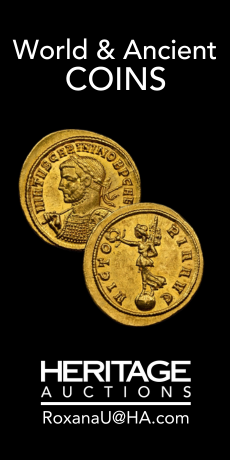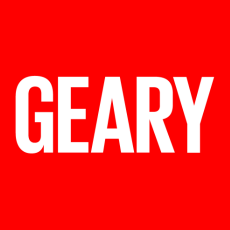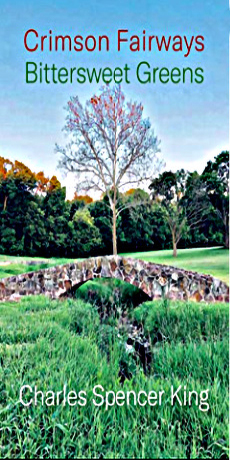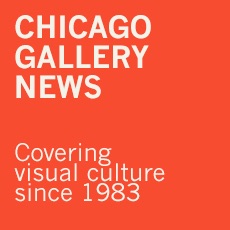BY ROBERT GLAZE
Located just 45 minutes from downtown Indianapolis, Columbus, Indiana, is a showplace of modern architecture. According to the New York Times, it “just happens to have the most incredible collection of modern architecture in the Midwest, outside of Chicago.”
Architecture buffs can see over 70 schools, office buildings, churches, banks, fire stations, and other public buildings designed by such architects as Eliel Saarinen and son Eero Saarinen, Harry Weese, Cesar Pelli, and I.M. Pei, and other important names of the mid-20th century. The American Institute of Architects currently ranks it sixth among U.S. cities for architectural design right behind Boston and Washington, D.C.
It started when J. Irwin Miller, head of the Cummins Engine Company for 30 years, helped persuade Eliel Saarinen to build a modern church, the First Christian Church, which was dedicated in 1942. After WWII, Saarinen’s famous son Eero designed the Irwin Union Bank in 1954. Miller then offered for the Cummins Engine Foundation to pay the architectural and design fees for all new schools and public buildings if distinguished architects were chosen from the foundation’s list. The trend started then continues today, with results that have put Columbus on the map.
I recommend, as a first stop, the Visitors Center at 506 5th Street to buy a map showing the location of the best sites to visit. This self-guided walking “tour” around the downtown area is at your own pace. I would then sign up for the two-hour city tour by bus—it allows you to get into two churches that are otherwise unavailable to see.
The other tour I recommend is at the Miller House and Garden, the former home of J. Irwin and Xenia Miller. It is one of the best examples of mid-century Modernist residences in the country. According to Travel + Leisure magazine, it ranks alongside Frank Lloyd Wright’s Falling Water, Mies Van der Rohe’s Farnsworth House, and Philip Johnson’s famed Glass House as one of the best examples of Modernist design.
The 6,800-square-foot home has an open and flowing layout, a flat roof, slate floors, glass and stone walls, plus colorful fabrics, furnishings, and furniture. Outside, there are 10 acres of lawn and gardens. It was designed as a place to raise their five children and entertain many friends and guests. In 2009, family members donated the house, gardens, and many of the original furnishings to the Indianapolis Museum of Art.
The house was commissioned in 1952 and designed by Eero Saarinen. Alexander Girard designed the interior and Daniel Urban Kiley the landscape. It was designated a National Historic Landmark in 2000 and is really stunning and not to be missed.
Lastly, through November 26, 2017, Exhibit Columbus features contemporary art and design installations throughout the city that are worth touring across the city to see. A quick tour tip: You should book the tours online before you go to make sure you get the times you want.
Other buildings you should visit include:
Cleo Rogers Memorial Library, 536 5th Street (I.M. Pei, 1969; the Large Arch – Henry Moore, 1971).
First Christian Church, 531 5th Street (Eliel Saarinen, 1942). You can visit the interior on one of the guided tours offered by the city.
AT&T Switching Station, 700 Franklin Street (Paul Kennon Caudill Rowlett Scott, 1978). Make sure to visit the alley to the west to see the large yellow, orange, red, and blue “organ pipes” on the side of the building!
Cummins Corporate Office Building, 500 Jackson Street (Kevin Roche of Rock Dinkeloo and Associates, 1984). Inside the lobby is the Cummins Engine Corporate Museum, which has some interesting displays featuring racecars, engines, and more. I particularly enjoyed the sculpture called Exploded Engine by Rudolph de Harak, which features a deconstructed engine to its smallest detail that hangs in midair.
Irwin Conference Center, 500 Washington Street (Eero Saarinen, 1954). This is an exceptional building: low, glass-walled, and set in a grove of trees.
Irwin Office Building Arcade and Addition, 520 Washington Street (Kevin Roche/John Dinkeloo and Associates, 1973).
Columbus Post Office, 450 Jackson Street (Kevin Roche/John Dinkeloo and Associates, 1970).
The Commons, 300 Washington Street (Koetter Kim and Associates, 2011). Make sure to stop inside this community space that includes restaurants and a playground to see the sculpture titled Chaos 1 from 1974 by Jean Tinguely.
Robert N. Stewart Bridge, State Road 46 (J. Muller International, 1999).
North Christian Church, 850 Tipton Lane (Eero Saarinen, 1964). This is a wonderful church to visit. You can visit the interior on one of the guided tours offered by the city. It features a 19-story spire topped with a gold-leaf cross.
Fans of glass artist, Dale Chihuly, can see three of his installations when visiting Columbus. These include:
Sun Garden Panels in Suspended Circles
Located at the Columbus Learning Center at 4555 Central Avenue, Chihuly created, painted, and signed each of the 32 painted plexiglass panels, each representing one of his blown-glass forms.
Yellow Neon Chandelier
Located in the Columbus Area Visitors Center at 506 5th Street, this is a chandelier consisting of 900 pieces of hand-blown glass in four shades of yellow. The piece is 9 feet tall, 6 feet across, and weighs 1,200 pounds. It is part of the Indiana Glass Trail.
Also at the Visitors Center is Persians, a glass sculpture made up of a common form used by Dale Chihuly. The hand-spun glass plates are installed within the two-story bay window surrounding the open staircase between the first and second floors. This installation was a gift from J. Irwin and Xenia Miller in 1995.
Where to Eat in Columbus
There are some fun spots to try while you are in town exploring the great architecture.
Be sure to try the homemade ice cream at Zaharakos Ice Cream, the famous ice cream parlor dating back to 1900. Enjoy the Tiffany-style lamps, the old marble soda fountain, the carved oak, and Old World atmosphere. Most importantly, the ice cream is great! They also have an attached museum. It is located in the heart of downtown at 329 Washington Street.
I enjoyed my dinner at Tre Bicchieri at 425 Washington Street. Opened in 2006, it is an Italian restaurant offering an extensive menu of steaks, pasta, seafood, and more, plus a large wine list.
At 421 7th Street, Jill’s Downtown Diner is the perfect downtown diner right out of the past. Open from 7 am to 2 pm, I highly recommend it for breakfast, when the people-watching is amazing!
At 410 Washington Street is The Savory Swine, a local butcher shop that features premium grade beef, pork, lamb, veal, chicken, and seafood. In addition, they offer a boutique wine collection, an imported and domestic cheese selection, as well as charcuterie. They have a lunch menu featuring sandwiches, salads, cheeses, and gelato.
For more high-end dining, Taku Steakhouse is a sleek restaurant at 305 4th Street featuring sushi, hibachi, and noodle dishes. Another fine dining option is the Henry Social Club, featuring farm-to-table cooking in a contemporary setting (423 Washington Street). I hope to try both on my next trip.
Lucabe Coffee Co. (310 4th Street) is a local coffee shop featuring great coffee, tea, and food. I stopped in twice while I was in town.
Located on the river at 148 Lindsey St., Columbus Pump House – Upland Brewing is the taproom of a Bloomington, Indiana-based brewery that can be found in a historic building from 1903. It is a great spot to grab a beer and a bite under the original archways or on the patio with views of the White River and Robert Stewart Bridge. They make a number of ales, lagers, ambers, pilsners, and porters both on a year-round and seasonal basis.
Where to Stay
I recommend staying in downtown Columbus so you can easily walk to restaurants, the Visitors Center, where the architectural tours start, and explore many of the great architectural highlights downtown.
I enjoyed staying at the Hotel Indigo Columbus Architectural Center, which is a colorful, 85-room, contemporary hotel with mid-century modern touches in its colors, furniture, and artwork. It is located at 400 Brown Street on the western edge of downtown, across from Mill Race Park. The have a large parking lot with free parking. There is also a casual cafe/bar, but I opted to eat in town to explore the enticing options there.
Set in a lovely Italianate mansion built in 1864 by the Irwin family, The Inn at Irwin Garden has five traditionally furnished rooms and suites. It has lovely gardens, which are well worth the visit as they are open to the public free of charge on Tuesdays and Sundays from 2 pm to 6 pm, June through October. Private tours of the house and gardens are also available on the same days. It is located at 608 5th Street in the heart of downtown—a short walk to the Visitors Center.
At 1210 16th Street, Ruddick-Nugent House, a bed & breakfast, is a Greek Revival home built in 1884 featuring four traditionally decorated rooms.
All make for ideal spots to rest up for a weekend of architectural abundance.
For more travel destinations and recommendations, visit globalphile.com.















